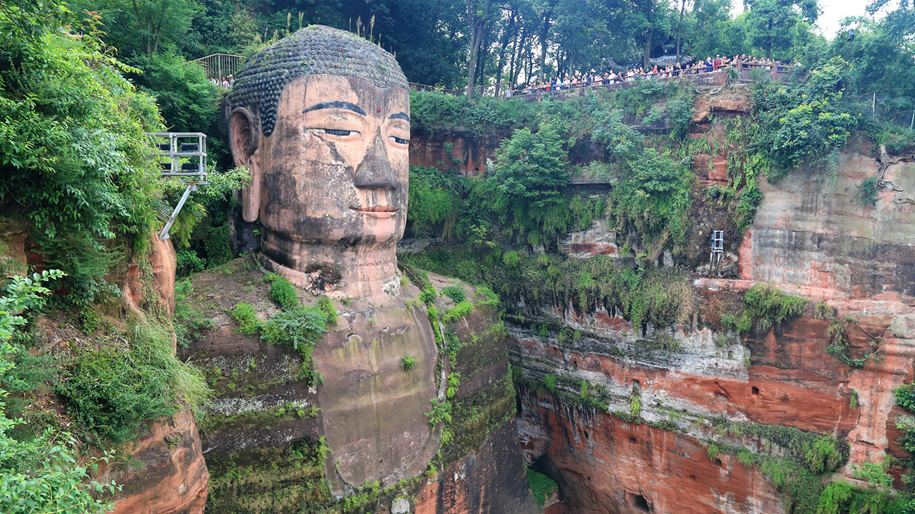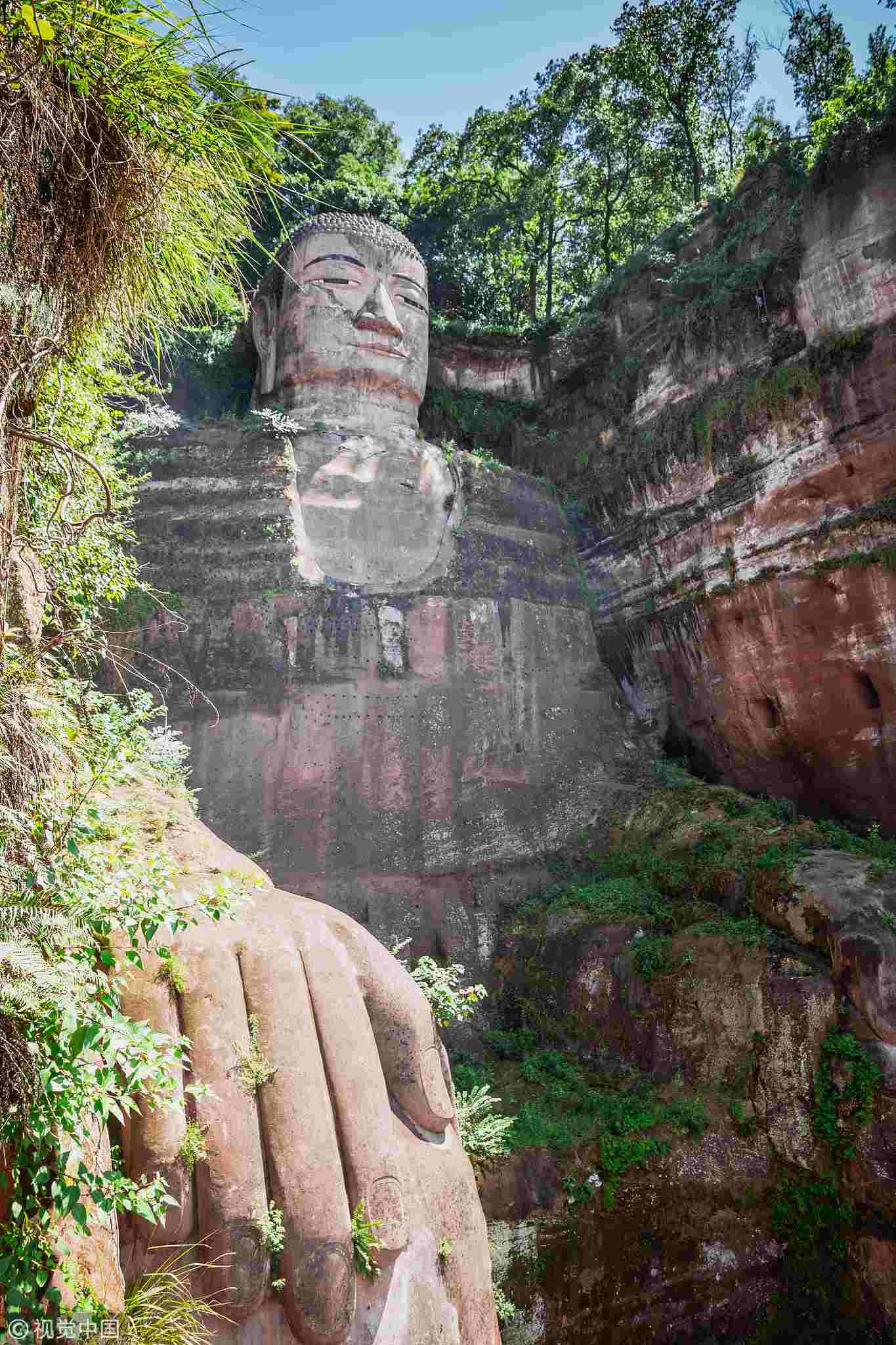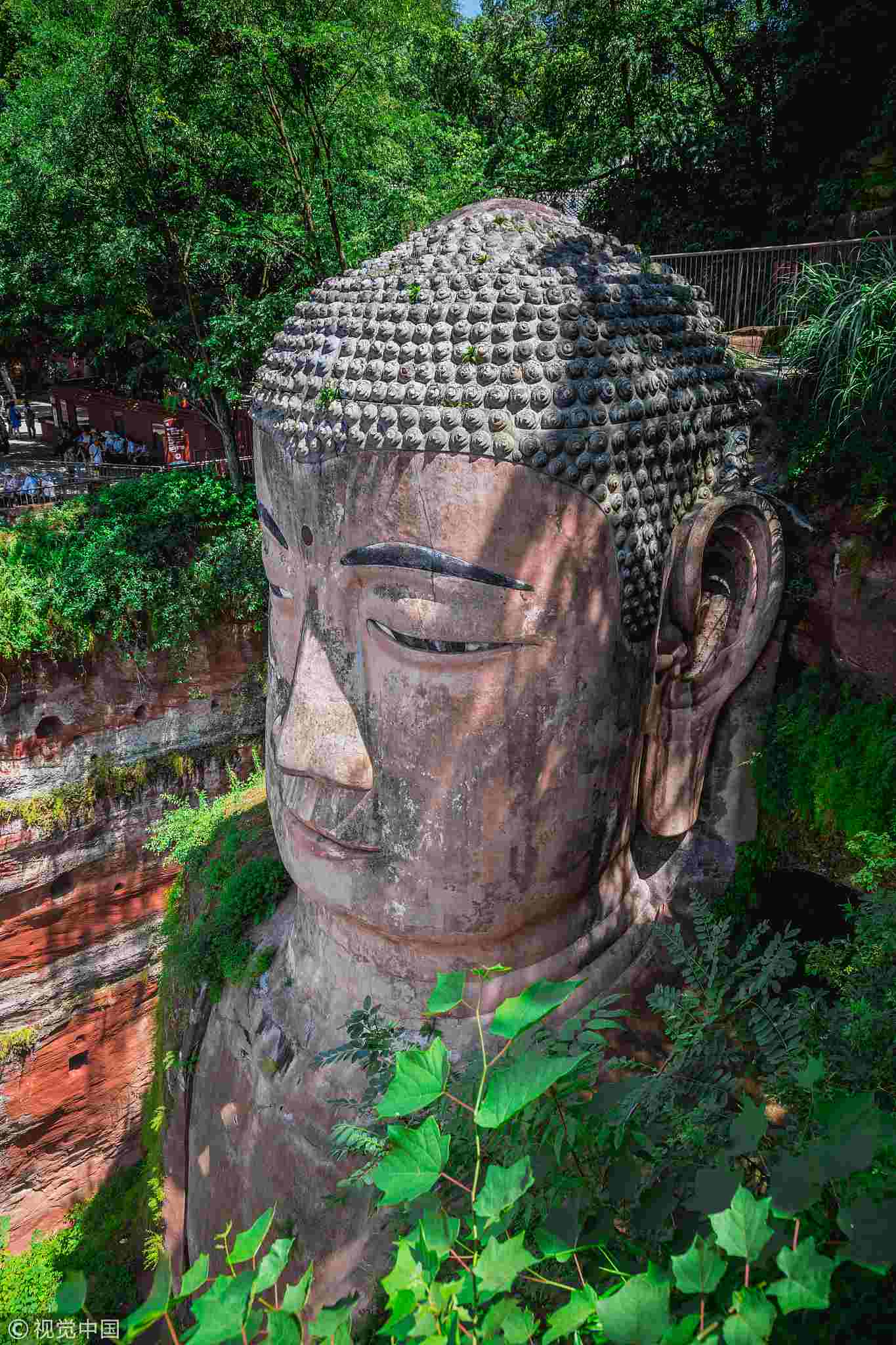
Culture
21:26, 01-Oct-2018
Giant Buddha of Leshan to undergo 'physical examination'
Updated
20:24, 04-Oct-2018
CGTN

The giant Buddha in southwest China's Sichuan Province will undergo a four-month examination as part of the research for its repair plan.
The statue, 71 meters high and believed to be the world's largest Buddha, sits outside the city of Leshan. It has cracks and damage on its chest and abdomen, according to the management committee of Leshan Buddha scenic area.

September 11, 2017: Giant Buddha of Leshan viewed from a low angle. /VCG Photo
September 11, 2017: Giant Buddha of Leshan viewed from a low angle. /VCG Photo
During the examination, which will start on Oct. 8, the main body of the statue will be partially or completely covered.
The examination will be overseen by dozens of cultural relic experts, involving the use of cutting-edge technology such as 3D laser scanning, infrared thermal imaging and a drone aerial survey.
The Buddha statue, carved into a cliff in Leshan Mountain and overlooking three converging rivers, was built over a 90-year period starting in the year 713, during the Tang Dynasty (618-907).

Giant Buddha of Leshan, September 11, 2017. /VCG Photo
Giant Buddha of Leshan, September 11, 2017. /VCG Photo
The United Nations Educational, Scientific and Cultural Organization-listed world cultural heritage statue has undergone several repairs and checks.
In 2001, a project was conducted to clean the body, cement rock structure, and mend cracks and install drainage pipes, at a cost of 250 million yuan (about 36.87 million US dollars).
In 2007, the Buddha received another facelift to repair damage caused by weathering and acid rain.
(Cover: Giant Buddha of Leshan, September 11, 2017. /VCG Photo)
Source(s): Xinhua News Agency

SITEMAP
Copyright © 2018 CGTN. Beijing ICP prepared NO.16065310-3
Copyright © 2018 CGTN. Beijing ICP prepared NO.16065310-3